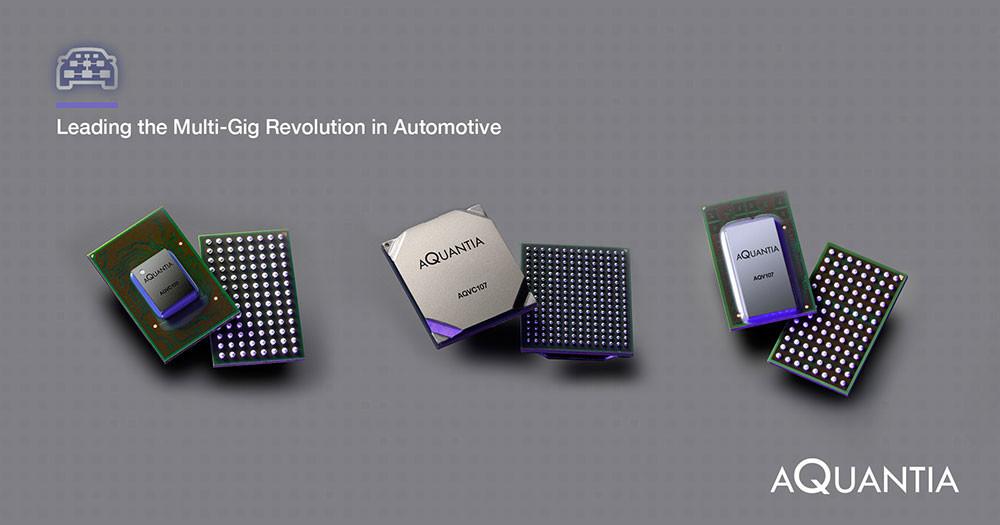Aquantia is announcing a new suite of products targeted at autonomous vehicle platforms – their AQcelerate product line is providing the Multi-Gig networking support for the NVIDIA DRIVE Xavier and DRIVE Pegasus platforms.
These high-performance computing platforms featuring Aquantia Multi-Gig networking will be available to automotive partners starting in the first quarter of 2018. The AQcelerate product line is made up of Multi-Gig Ethernet controllers and PHYs supporting up to 10Gbps.
introduced a suite of products targeted at autonomous vehicle platforms. Earlier today, Aquantia also announced a collaboration with NVIDIA to provide Multi-Gig networking support for the NVIDIA DRIVE Xavier™ and DRIVE Pegasus platforms. These high-performance computing platforms featuring Aquantia Multi-Gig networking will be available to automotive partners starting in the first quarter of 2018.
The AQcelerate Automotive product line includes the following high-performance networking devices, which all support data rates up to 10GbE:
- The AQV107 Multi-Gig PHY
- The AQVC107 PCIe Multi-Gig MAC+PHY Ethernet controller
- The AQVC100 PCIe Multi-Gig controller (MAC only)
“The number one feature for self-driving vehicles is safety,” said Faraj Aalaei, Chairman and CEO of Aquantia Corp. “Vehicle sensors and cameras collect huge amounts of data that need instant processing to allow the vehicle to make critical decisions that ensure the safety of the driver, passengers, and anyone else sharing the road. Moving data between the sensors and the compute nodes within the In-Vehicle Network (IVN) requires Multi-Gig capabilities to deliver a safe and secure driving experience.”
The introduction of these products creates a new era of Multi-Gig networking devices to support the development of autonomous vehicles. By adopting Aquantia’s industry proven, high-performance Ethernet solutions, automotive OEMs can enable the deployment of next generation networking architectures to provide a new level of passenger safety and security that is becoming a critical requirement for Level 4 and Level 5 self-driving vehicles.
Moving to Level 4 and Level 5 autonomous driving requires a new network architecture that can support:
- High-bandwidth requirements for the IVN to support the increasing number of sensors and high-resolution cameras.
- Redundancy of all the function-critical components and systems to provide the utmost levels of safety.
- Simplification and security – moving from multiple network interfaces into an industry proven, coherent, secure network that supports all the required features of autonomous driving.
These requirements are driving the industry towards Multi-Gig Ethernet over copper – the perfect fit for Aquantia’s deep networking expertise, knowledge, and experience.
The autonomous driving ecosystem is growing to include more OEM car manufacturers, Tier-1 suppliers, GPU/CPU companies and high-performance networking silicon suppliers as the requirements become more stringent. The potential market opportunity is considerable. Raymond James estimates that the silicon content in autonomous vehicles will represent a $30 billion total addressable market by 2030.
Earlier this month, Aquantia also announced a collaboration with Molex on a 10 Gbps Automotive Ethernet Network at CES. This week, Aquantia will demonstrate these new products at the Automotive Ethernet Congress in Munich.



